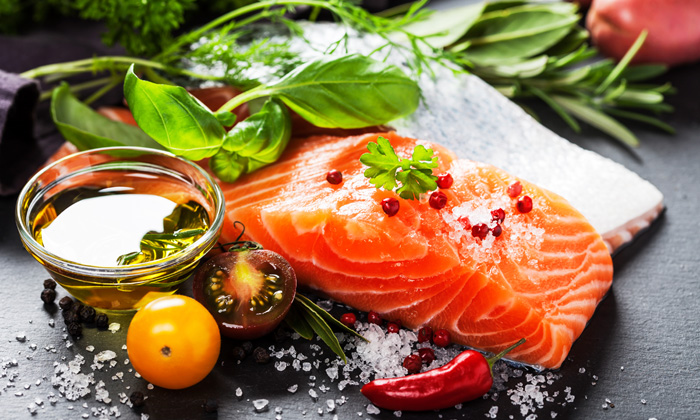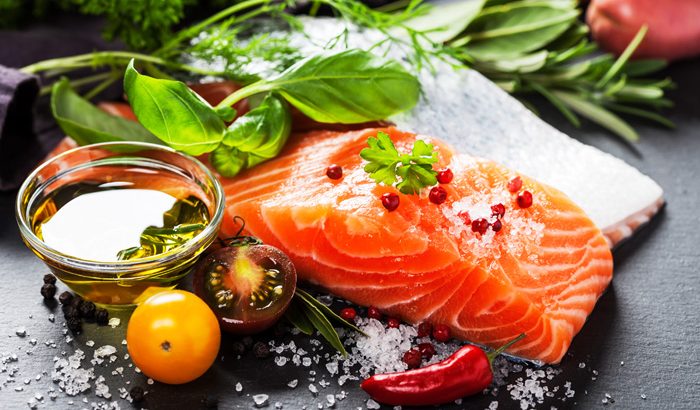
Prepare fish and seafood twice weekly as your main source of protein. Seafood products contain various nutrients, including healthy fats like omega-3. Consuming half a pound (250g) of fish per week, especially fatty fish, may help prevent heart disease.
1.- Cook them safely: before you start cooking, check oysters, mussels and clams for freshness. Discard raw shells that don’t close upon touching, and those that didn’t open after cooking. These are signs that shellfish may not be safe to eat. Cook shrimp, lobster and scallops until they show a milky white color. Cook fish at 350°F (180°C) until it’s soft and tender.
2.- Put them in salads and sandwiches: throw crab in salads, and eat grilled shrimp or scallops instead of steak or breaded chicken. Use preserved tuna or salmon, not cold cuts which often contain more sodium, in sandwiches.
3.- Seafood also counts! Oysters, mussels, clams, and squid supply omega-3. Try steaming mussels, stewed oysters, or calamari pasta.
4.- Keep a healthy supply of seafood products: canned fish, like salmon, tuna, and sardines, is quick and easy to use. Canned white tuna contains more omega-3, whereas ‘diet’ tuna has less mercury.
5.- Eat a variety of sea products: include some of those with high levels of omega-3 and little mercury, like salmon, trout, oysters, Atlantic or Pacific mackerel, herring, and sardines.
6.- Explore your creative side: check out those salmon burgers, sautéed shrimp, grilled fish tacos, and clams over wholewheat pasta, that you’ve been hearing so much about lately. Add a touch of variety by trying new kinds of fish, like grilled mackerel, herring in salad, and haddock in the oven.
7.- Low-fat but tasty: fix seafood in the oven, boiled, or on the grill. Avoid breaded, fried and creamy seafood that will only add calories and fat. Use spices and herbs like dill, garlic powder and lemon juice, to improve taste without resorting to salt.
8.- Shop smart: eating more seafood doesn’t mean paying more for groceries. Whiting, tilapia, sardines, canned tuna, and some frozen seafood products, are normally cheaper. To help you save, look for discounted prices, coupons and special offers, both at the supermarket and online.
9.- Seafood and healthy growth: omega-3 fatty acids found in seafood can help improve nervous system development in babies and children. Serve seafood twice a week in portions based on age and appetite. Low-mercury seafood should also be part of the diet of women that are pregnant or nursing.
10.- Know your servings: use the following guide to reach that weekly half a pound (250g) of seafood: a can of drained tuna contains roughly 3.5 ounces (100g); salmon filets normally weigh a little over 5 ounces (100g); a small trout is approximately 3 ounces.

